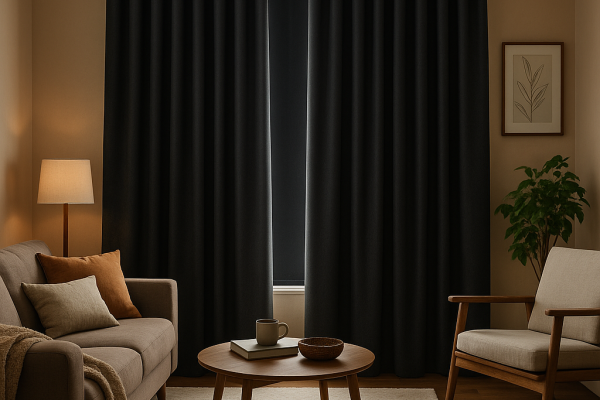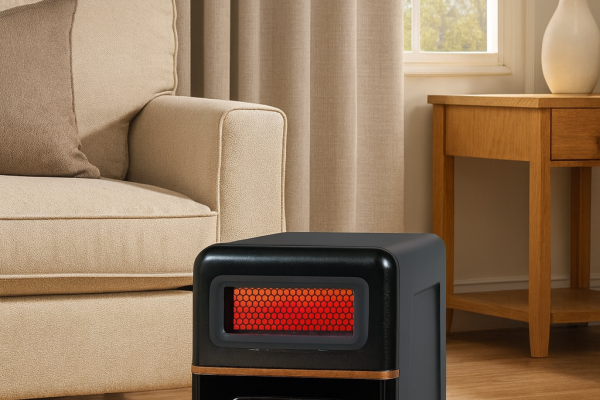 Have you noticed how some patterns in your home make you feel calm while others might leave you feeling on edge? There’s science behind this reaction, and it involves fractals – those fascinating patterns that repeat at different scales throughout nature. While fractal design can boost mental clarity and wellbeing when done right, common mistakes can turn this powerful design tool into a source of stress instead.
Have you noticed how some patterns in your home make you feel calm while others might leave you feeling on edge? There’s science behind this reaction, and it involves fractals – those fascinating patterns that repeat at different scales throughout nature. While fractal design can boost mental clarity and wellbeing when done right, common mistakes can turn this powerful design tool into a source of stress instead.
Let’s look at why fractals matter in your home and how to avoid the pitfalls that many homeowners and even professional designers make when incorporating them.
What Are Fractals and Why Do They Matter?
Fractals are complex geometric patterns that show self-similarity across different scales. Think about fern leaves, with their overall shape repeated in each smaller leaflet, or the branching patterns of trees.
Two key fractal types exist:
- Exact fractals: Mathematically perfect, precisely repeating patterns
- Statistical fractals: Naturally occurring patterns with slight variations and randomness
Our brains have evolved alongside nature’s statistical fractals, developing what scientists call “fractal fluency” – the ability to process these patterns efficiently without mental strain. This processing ease contributes to why certain natural environments help us feel relaxed and focused.
Research shows exposure to fractal forms with mid-range complexity can reduce stress levels by up to 60%. The sweet spot for mental clarity appears to be fractals with a dimension (D-value) between 1.3 and 1.5.
The 6 Most Common Fractal Design Mistakes
1. Overusing High-Complexity Patterns
The mistake: Filling spaces with intricate, busy fractal patterns with high D-values.
The impact: While complex patterns might look impressive, they can overwhelm the senses and increase stress rather than reduce it. Research shows that as complexity increases, engagement goes up but relaxation decreases.
Example: A bedroom wallpapered on all four walls with an intensely detailed, high-contrast geometric pattern might stimulate rather than soothe, making restful sleep difficult.
Mandarin Morning Mural Wallpaper [click to view…]
2. Poor Scaling Choices
The mistake: Using fractal patterns at inappropriate sizes relative to the room dimensions.
The impact: When pattern scale doesn’t match the space, it creates visual discomfort and can make rooms feel either claustrophobic or disconnected.
Example: A small home office dominated by large-scale, intricate fractal artwork that makes the limited space feel even more confined and visually chaotic.
3. Clashing Fractal Patterns
The mistake: Combining different fractal patterns without a coherent strategy.
The impact: Random mixing of patterns creates visual noise and disrupts the sense of harmony needed for mental clarity.
Example: A living room where furniture, rugs, curtains, and accessories all feature different geometric patterns with conflicting scales and color schemes, leaving the eye with nowhere to rest.
4. Choosing Artificial Over Natural Fractals
The mistake: Preferring computer-generated, mathematically perfect fractals over nature-inspired patterns.
The impact: While visually striking, artificial fractals often fail to trigger the same calming, biophilic response as organic patterns.
Example: A sunroom filled with stark, computer-rendered fractal art that feels cold and manufactured rather than creating a peaceful connection to nature.
Flower Farm Mural Wallpaper [click to view…]
5. Forgetting Visual Breathing Space
The mistake: Saturating spaces with fractal patterns without providing visual breaks.
The impact: Even calming individual fractals can cause mental fatigue when there’s no visual rest area for the eye.
Example: A dining room where the rug, curtains, wall art, and tableware all display fractal patterns without any solid colors or textural breaks, creating sensory overload during meals.
6. Ignoring Other Design Fundamentals
The mistake: Focusing solely on fractal patterns while neglecting other design principles.
The impact: Fractals alone can’t create mental clarity if lighting, color, organization, and layout work against them.
Example: Nature-inspired fractal patterns placed in a room with harsh lighting, cluttered surfaces, and poor traffic flow, negating any potential benefit to mental wellbeing.
Psychological Effects of Fractal Patterns Based on Complexity
Expert Recommendations for Successful Fractal Integration
Choose Mid-Range Complexity
Select patterns within the “fractally fluent range” (D-value of 1.3-1.5) that engage without overwhelming. These provide the sweet spot between too simple (boring) and too complex (stressful).
Prioritize Natural Fractals
Opt for patterns that mimic nature – think wood grain, leaf patterns, water ripples, or botanical prints. These trigger more authentic biophilic responses than purely geometric designs.
Scale Appropriately
Match the pattern size to the room dimensions and viewing distance:
- Larger, more intricate patterns work as focal points in spacious rooms
- Smaller, subtle patterns suit intimate spaces or accent pieces
Use Fractals as Accents
Naïve Mural Wallpaper [click to view…]
Rather than dominating entire spaces, introduce fractal elements through:
Create Visual Breathing Room
Provide solid colors and varied textures around fractal elements to give the eye places to rest. This prevents visual fatigue and enhances the impact of your fractal pieces.
Integrate with Other Design Elements
For maximum mental clarity benefits, combine fractal design with:
- Natural or adjustable lighting
- Calming color schemes (particularly blues and greens)
- Uncluttered, organized arrangements
- Good traffic flow
- Proper acoustic considerations
Test Before Committing
Before investing in permanent or expensive fractal features:
- Try temporary applications first (removable wallpaper, rental art)
- Observe how different patterns affect your mood over time
- Pay attention to how guests respond to the space
Finding Balance for Mental Clarity
Fractal design offers a unique approach to creating homes that support mental clarity through their connection to nature and stress-reducing qualities. The key lies in thoughtful application rather than simply adding patterns.
When done right, fractal elements create spaces that feel simultaneously engaging and relaxing – much like a walk through a natural setting. They can transform your home into a haven that supports clear thinking and emotional wellbeing.
Remember that balance is crucial. Too few fractals might miss opportunities for biophilic connection, while too many risk creating the very mental clutter you’re trying to avoid.
By avoiding the common design fails outlined above and following expert recommendations, you can harness the power of fractal design to create a home environment that truly supports mental clarity and wellbeing.
Dora Decora is a biophilic interior design specialist and passionate blogger. With a deep commitment to integrating nature into living spaces, Dora specializes in creating environments that foster human-nature connections through thoughtful design elements. Her approach emphasizes sustainable materials, natural lighting, and organic patterns that enhance wellbeing and reduce environmental impact.
This post (https://homechroma.com/most-common-interior-fractal-design-fails-for-mental-clarity) was originally published by Dora Decora on Home Chroma. As an Amazon Associates partner, we are compensated for all qualifying purchases.
























